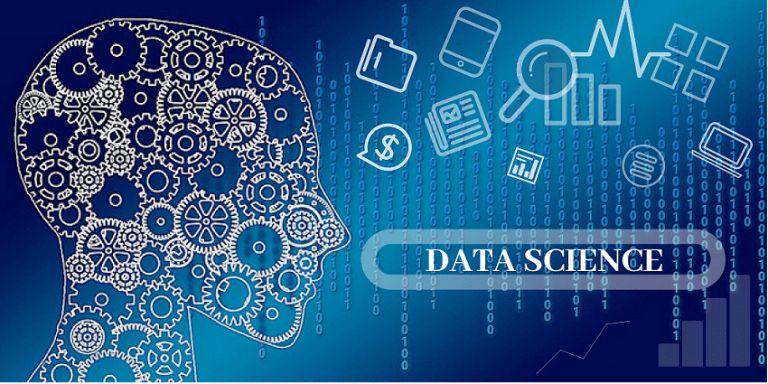Data Science
Sep 10, 2019 • 7 views
Data science :
It is the combination of mathematics(statistics), management and computer science to understand and analyze the actual phenomena with data.
Jim Gray imagined data science as a "fourth paradigm" of science (empirical, theoretical, computational and now data-driven) and asserted that "everything about science is changing because of the impact of information technology" and the data deluge. In 2015, the American Statistical Association identified database management, statistics, and machine learning, and distributed and parallel systems as the three emerging foundational professional communities.
In 2012, when Harvard Business Review called it "The Sexiest Job of the 21st Century", the term "data science" became a buzzword. It is now often used interchangeably with earlier concepts like business analytics,[9] business intelligence, predictive modeling, and statistics. Even the suggestion that data science is sexy was paraphrasing Hans Rosling, featured in a 2011 BBC documentary with the quote, "Statistics is now the sexiest subject around." Nate Silver referred to data science as a sexed-up term for statistics. In many cases, earlier approaches and solutions are now simply rebranded as "data science" to be more attractive, which can cause the term to become "dilute[d] beyond usefulness." While many university programs now offer a data science degree, there exists no consensus on a definition of suitable curriculum contents.[9] To its discredit, however, many data-science and big-data projects fail to deliver useful results, often as a result of poor management and utilization of resources.
Computer science (sometimes called computation science or computing science, but not to be confused with computational science or software engineering) is the study of processes that interact with data and that can be represented as data in the form of programs. It enables the use of algorithms to manipulate, store, and communicate digital information. A computer scientist studies theory of computation and the practice of designing software systems.
Its fields can be divided into theoretical and practical disciplines. Computational complexity theory is highly abstract, while computer graphics emphasize real-world applications. Programming language theory considers approaches to the description of computational processes, while computer programming itself involves the use of programming languages and complex systems. Human-computer interaction considers the challenges in making computers useful, usable, and accessible.
This aspect of data science is all about uncovering findings from data. Diving in at a granular level to mine and understand complex behaviors, trends, and inferences. It's about surfacing hidden insight that can help enable companies to make smarter business decisions. For example:
• Netflix data mines movie viewing patterns to understand what drives user interest, and uses that to make decisions on which Netflix original series to produce.
• Target identifies what are major customer segments within its base and the unique shopping behaviors within those segments, which helps to guide messaging to different market audiences.
• Proctor & Gamble utilizes time series models to more clearly understand future demand, which helps plan for production levels more optimally.
How do data scientists mine out insights? It starts with data exploration. When given a challenging question, data scientists become detectives. They investigate leads and try to understand patterns or characteristics within the data. This requires a big dose of analytical creativity.
Then as needed, data scientists may apply a quantitative technique in order to get a level deeper – e.g. inferential models, segmentation analysis, time series forecasting, synthetic control experiments, etc. The intent is to scientifically piece together a forensic view of what the data is really saying.
This data-driven insight is central to providing strategic guidance. In this sense, data scientists act as consultants, guiding business stakeholders on how to act on findings. DataScience MachineLearning Bussiness mangemant

